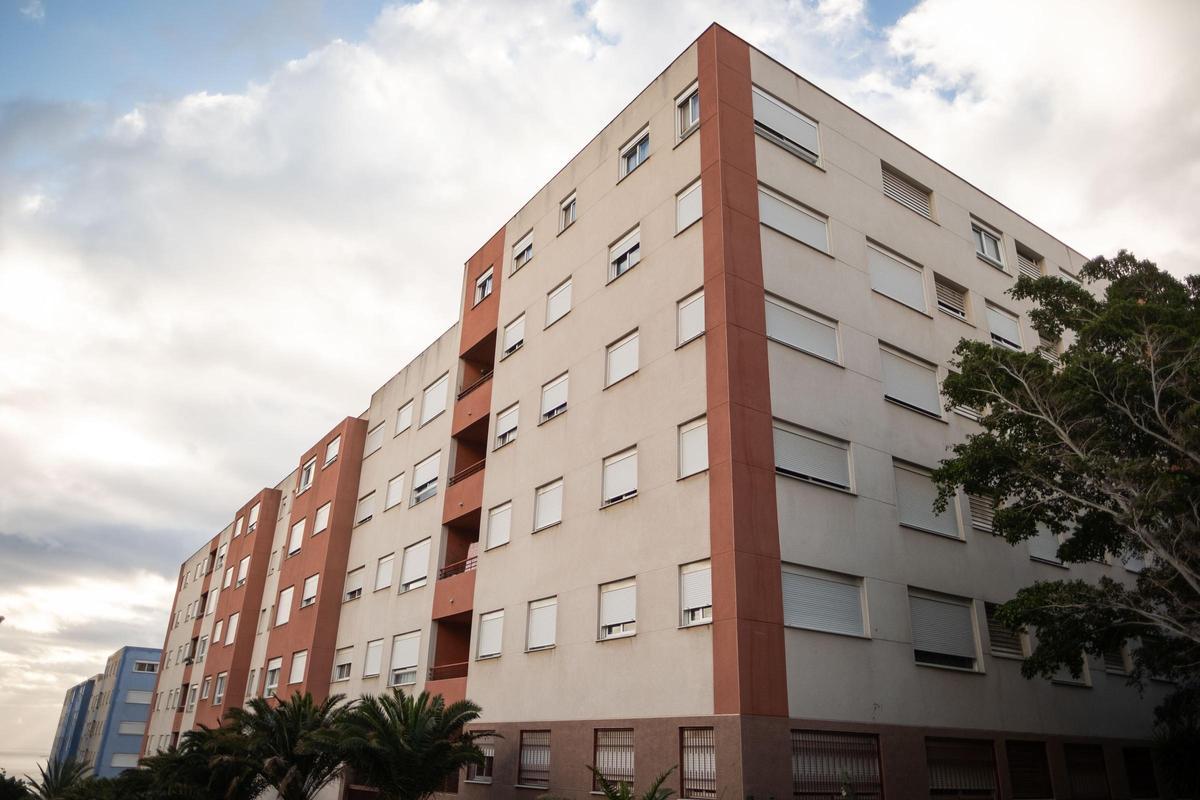One in five homes constructed in Tenerife is uninhabited. 20% of the 468,750 registered, a total of 93,750, remain empty despite 11,000 families being registered as applicants for scarce or non-existent public promotions. High demand and low supply create a bottleneck, turning the housing challenge into the main concern, along with mobility, for the locals.
The recent report on the Demographic Challenge by the Government of the Canary Islands provides cold statistical data. Tenerife has the highest number of homes in the Canary Islands, with 43% of the regional total. The percentage of empty homes is similar to the Canary average, 20%. The plan includes 157,276 new homes, of which 106,853 (68%) are pending execution. A significant amount of residential land remains undeveloped.

Visocan homes in Añaza. / E. D.
Tenure
Regarding ownership, property is the predominant choice (67%), with Tegueste (77.5%) or La Matanza de Acentejo (75.5%) standing out. Renting represents just 18%, most common in Arona (33.3%) and Granadilla de Abona (29.1%).
Growth
Urban growth has accelerated since 1980, with 70% of buildings constructed after that date and 35.4% after 2000. Still, 8.1% predate 1950, and 25.3% were built between 1950 and 1979. The areas with the most expansion are the south of the Island, especially Granadilla and San Miguel de Abona. In Santa Cruz and La Laguna, the conurbation of the Metropolitan Area, development has been more balanced.
Expert
Real estate expert Vanesa Rubio summarises the four reasons which, in her opinion, determine this scenario of empty homes on the Island: «Those with unresolved legal issues; second homes; uninhabitable properties whose owners lack the financial resources to renovate them, and finally, the insecurity and lack of legal protection that owners feel in residential rentals, leading them to holiday lettings».
Problems
Rubio delves into the fact that «there are more than 200,000 empty homes, almost 20% of the stock in the Canary Islands». Many have family or legal conflicts. Therefore, she adds, «legal issues prevent them from being listed on the market». There are also second homes with owners who have apartments in tourist areas, particularly in the south, for summer or holiday use.
Insecurity
Some properties require significant renovation. They are in a state of ruin, do not meet minimum habitability conditions for the market, and the owners lack resources to carry out renovations or repairs due to insufficient economic capacity for the substantial investment. Additionally, many owners feel legal insecurity, particularly concerning letting properties in the rental market, fearing non-payment or property care issues.
Market
Rubio believes that «if someone has a habitable property without legal problems, they will list it on the market». Due to fear of squatting, because empty homes deteriorate, and because maintaining them requires money for taxes and utilities. But, according to the expert, «faced with problems, they will not».
Investments
Tenerife contributes 4.4 million euros to the State’s agreement with the Government of the Canary Islands for the construction of 134 affordable rental homes in the south (674 across the Archipelago). They will be built in Adeje (51), Guía de Isora (24) and Arona (59). The Cabildo notes that, through the Housing area, resources have been increased since the start of the term (2023-2027) to 38.5 million euros, which will mean the construction or enablement of 1,134. This also includes the Activa Vivienda, Activa Suelo and Rehabilitation plans.
Social Debate
Housing continues to be at the centre of the socio-political debate in Tenerife, as demonstrated by last Friday’s session of the Cabildo. Once again, the socialist opposition proposed a motion to allocate 20 million euros to the area and incorporate an Island Office. The PSOE believes that the competencies granted by the decree of the Government of the Canary Islands from January 2024 have not been exploited. The motion was once again rejected by CC and PP with references to the problems of the State Law. Both parties believe they are «on the right path» on their roadmap «in collaboration with the town councils» and with «the largest investment in history». As the saying goes: «It is the housing…».
Subscribe to keep reading
















